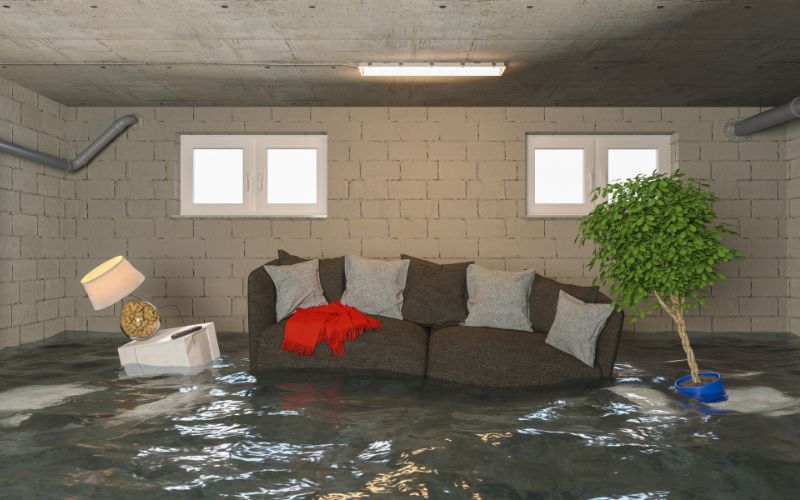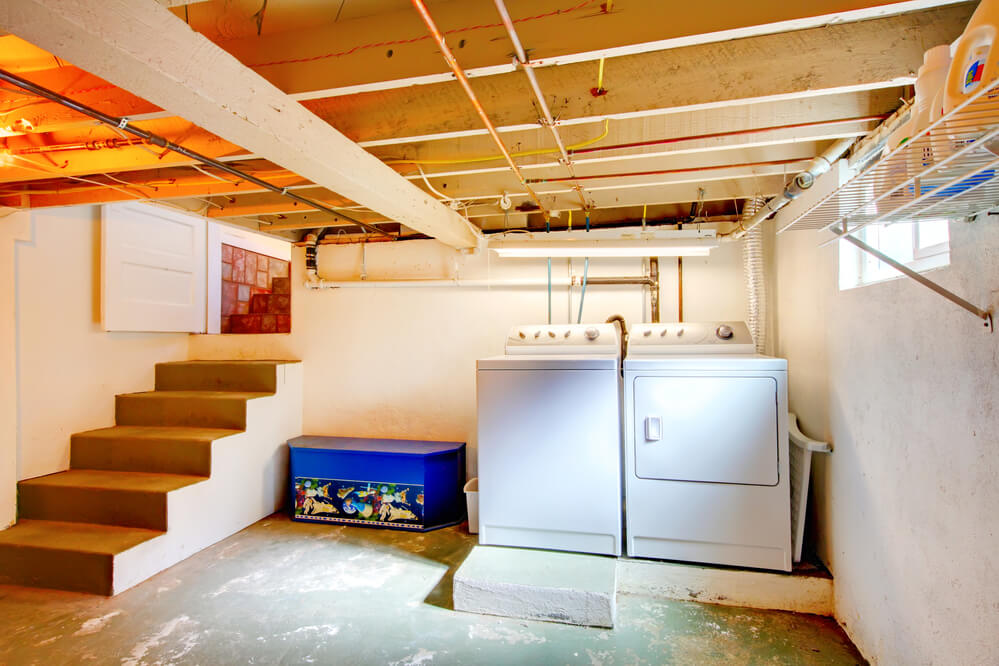
Opening Hours – 24/7
Opening Hours – 24/7

Did you know that your basement is the most vulnerable place in the house that is most likely to be affected by water damage and flooding? If you have recently experienced a flood in your basement, and you’re standing on your basement stairs, staring into the murky mess below, wondering how on Earth you can even begin to tackle your flood damage restoration process, we’ve got you. There are so many things to consider throughout this process; the flooded basement clean-up cost, how to save your possessions, if you should DIY or invest in a basement flooding clean-up service, and what the first thing you should do is. Try to relax because we’re going to take you through all of that and more in this article to help you restore your flooded basement. Time is of the essence, so let’s get into it!
This is the first thing you should do. The source of water and the original cause of the flood will dictate how you and your clean-up restoration team operate within your home. For example, if the source of the water seems to be coming from something inside the house, such as a burst pipe or faulty appliance, then you should turn off the source of the water immediately. Sometimes, knowing where the water has come from can be difficult. In those cases, turning your water main off will cut the flow of more water pouring into your home.
In the case of a storm flood, it can be a bit more challenging to stop that water from coming in. Usually, in these cases, a team of professional restoration operators would be best suited for this immediate task. In some cases, it may be possible to redirect the flow of water away from your home to prevent more water from funneling in. This should only be attempted if it is safe to do so.
Once the source of water has been stopped, it can be mended by a professional, usually a restoration operator or a plumber, before progressing to the next phase of restoring your basement.
As soon as you have stopped the flow of water and the area is relatively safe, you’ll want to contact your insurance company (and a professional restoration team, if you haven’t already done so). Depending on your insurance company and the specific terms within your contract, your coverage and processes will be unique to you. Don’t just go by word of mouth of what your Mom says; speak directly to them and verify the terms within your claim.
By talking to your insurance company early on in the process, they will also be able to guide you through the process and give you further information and tips on what you should be doing throughout the process. For example, taking photos and retaining receipts and invoices for repair work. In addition, once your restoration operator sends their initial report to your insurance company, they will be able to provide you with a more accurate projected coverage plan.
Once all the practical steps above have taken place, it’s time to extract water out of there. First, it’s important to know that two types of water must be addressed when doing a comprehensive flood damage restoration. The first is known as excess, or standing, water. This is the water you can see pooled in your basement; the depth will vary depending on your space’s size and the damage’s extent. But generally, this is water that you could stand in, and it would reach part way up your legs or enough for you to reach down and scoop up in your hands (don’t do either of these without adequate safety wear, though).
The second type of water is water that has been absorbed into surfaces, carpets, walls, furniture, and more. It is extremely important that you remove the standing water as soon as possible, ideally no later than 24 hours post-exposure. If standing water is left to fester, the risk of mold developing only continues to increase. A professional basement flooding clean-up service will have industry equipment, such as pumps, hoses, fans, and more, to extract the excess water and dry out the water within absorbed objects.
The next phase of the flood damage restoration process is to address the carpets. Due to the porous make-up of the material and the combined factor that carpet sits on the ground, they are often one of (if not the most) affected areas of a flooded basement. Unfortunately, even if you act quickly, your carpets still have a chance of developing mold. Your restoration operation team will assess the quality of the carpet and determine whether or not any of it is salvageable. Typically carpets are made up of four layers of materials, so while one layer may need to be replaced, you still may be able to salvage some.
Your flood damage restoration team will then be able to address the quality of your baseboards, drywall, and insulation to restore and replace the necessary materials.
Cleaning your recently flooded basement is a major undertaking that professionals should handle. Flood water often carries a lot of harmful bacteria, some of which can cause sickness and mold growth. Your professional restoration team will work with their air movers and drying equipment to eliminate any water that lingers unseen.
After all the water is removed, the affected area will need to be thoroughly cleaned with professional cleaning agents and sanitized to disinfect your basement. Your professional restoration team will also use deodorizers to eliminate any musty smell that lingers from previously wet materials.
Even once your basement looks like its old self again, this phase is not quite complete. Expert restoration providers will insist on conducting an inspection to ensure that no structural damage is caused when the house is exposed to excess water. They will also check for mold and provide instructions on how and when to check for mold; mold can still appear weeks after the incident is repaired.
If you have a water damage emergency, give us a call, and our time will be on-site as soon as possible!
What an amazing response! I had a great experience with Restoration Operators – Connecticut! I called them immediately after my house flooded and they came out within 45 min. It’s a great choice!
Amazing job. Our basement flooded twice
and the did outstanding work drying it out
quickly. Very responsive and were very easy
to work with.
I cannot express how grateful I am for the amazing service provided by this sewage cleanup company. They arrived promptly and efficiently cleaned up the mess left by a broken sewer line.
Restoration Operators did an awesome job for us fixing water damage! We would not hesitate to recommend them to friends and to use this company again if the need arises.
